Most innovative companies for 08/13/2024 (new inventions)
Exciting new inventions from Qualcomm Incorporated, Samsung Electronics Co., Ltd., Apple Inc. And Canon Kabushiki Kaisha
This is a weekly article summarizing a handful of inventions from the most innovative companies in the world. The summaries are created by an A. I. and proof-read by a human before publication. Attempts are made to ensure accuracy of the descriptions, but it is very much a work in progress. Each invention description is preceeded by a poem about the invention that is written by the A. I. I have found the limerick is actually quite good at explaining the invention in simple terms. Enjoy!
****
"Revolutionary Agricultural Device Redefines Reduced Tillage Techniques in the Field"
What is this invention?
Agricultural field preparation device
In fields where tillage must be reduced,
A device with new techniques is imbued,
With a frame and a separator, it's made,
To leave strips of soil and plant matter swayed,
Crimping stems, a new path it pursued.
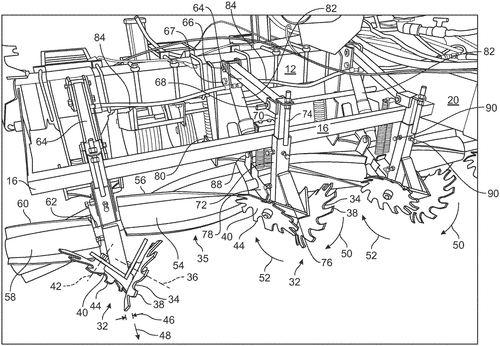
In a bid to revolutionize agricultural practices, a new patent has emerged for an innovative agricultural device designed to facilitate reduced tillage techniques in the field. The device features a frame and a separator that work together to form a strip of exposed soil amidst residual plant matter. A crimping device is integrated to crush stems of the plant matter while preserving the created strip. Competitors like traditional plows and tillers may face stiff competition from this cutting-edge invention, offering farmers a more eco-friendly and efficient alternative. Imagine the potential impact of reduced tillage techniques on soil health and crop yields with this device in play. Could this patented agricultural device be the game-changer that modern farming needs? Share your thoughts on the future of agriculture in the comments below.
Abstract
An agricultural device associated with reduced tillage techniques in a field includes a frame and a separator supported by the frame. The separator is configured to form a strip of exposed soil in residual plant matter in the field. A crimping device associated with the separator is configured to at least partially crush stems of residual plant matter while maintaining the strip. An agricultural device associated with reduced tillage techniques in a field includes a frame and a separator supported by the frame. The separator is configured to form a strip of exposed soil in residual plant matter in the field. A crimping device associated with the separator is configured to at least partially crush stems of residual plant matter while maintaining the strip.
US Patent 12058944
****
"Pawsitively Genius: Inventor Patents Toilet Seat for Training Animals"
What is this invention?
Toilet seat for animals
There once was a seat for a bowl,
For animals, a novel goal.
Toilet training made easy,
No more mess, oh so breezy,
The future of pet care, a new role!

In the realm of innovative solutions for our furry friends, a new patent has emerged, introducing a toilet seat designed specifically for animals. This unique contraption allows pets to use the toilet instead of relying on the outdoors or a litter box. With a platform for pets to comfortably perch on and various inserts to aid in training, this invention aims to revolutionize the way our pets attend to their bathroom needs. While the concept of a toilet seat for animals may sound peculiar at first, it raises intriguing possibilities for pet owners seeking convenient and hygienic solutions. Imagine a world where pet owners no longer have to deal with litter boxes or constant trips outside for their pets' bathroom breaks. Could this invention be the next evolution in pet care, offering a cleaner and more efficient way for animals to do their business? As we ponder the potential applications of this patent, one can't help but wonder: Will pet owners embrace this novel approach to potty training their furry companions? Share your thoughts in the comments below.
Abstract
Described herein is a toilet seat capable of being coupled to an existing toilet bowl enabling the toilet to be used by animals. Further, the toilet seat can be used in training an animal to use a toilet as opposed to going outside or using a litter box. The toilet seat has a platform for the animal to rest upon as well as a number of inserts configured to help with training the animal to use the toilet. Described herein is a toilet seat capable of being coupled to an existing toilet bowl enabling the toilet to be used by animals. Further, the toilet seat can be used in training an animal to use a toilet as opposed to going outside or using a litter box. The toilet seat has a platform for the animal to rest upon as well as a number of inserts configured to help with training the animal to use the toilet.
US Patent 12058978
****
"Revolutionary Auto-Adjusting Angling Device Enhances Fishing Experience"
What is this invention?
Angling device
In fishing, there's a device quite nifty,
With a jaw that captures lines so swiftly.
Pivoting with ease,
It aims to please,
Automatically moving, oh so shifty!
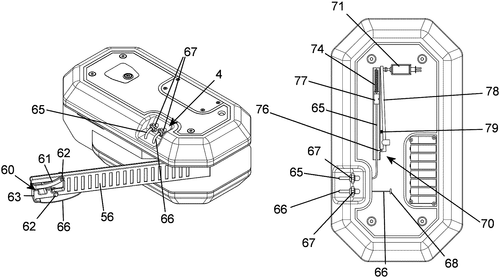
A new angling device has just been patented, promising to revolutionize the way we fish. This device features a housing with an arm that can pivot and a line capture jaw, designed to automatically adjust its position on an angling rod. In the competitive world of fishing gear, this invention could potentially give anglers a new edge over their catches. Imagine effortlessly reeling in a big one, as this device intuitively moves to the optimal position on your rod, ensuring a smooth fishing experience. While there are similar products on the market, none have the automatic activation feature that this new device boasts. The question remains: Will this patented angling device make its way from the drawing board to the tackle box? Would you invest in a product like this to enhance your fishing adventures? Share your thoughts in the comments below.
Abstract
An angling device comprising a housing arranged with an arm with a pivot to the housing at a proximal end and a line capture jaw at a distal end, a location means for location of the line capture jaw in use on a line of an angling rod, and a mechanism for pivoting the arm from a second position where the line capture jaw locates on the line in a second location on the rod, to a first position where the line capture jaw locates on the line in a first location on the rod, wherein the mechanism is activated automatically after movement of the line to the second location on the rod. An angling device comprising a housing arranged with an arm with a pivot to the housing at a proximal end and a line capture jaw at a distal end, a location means for location of the line capture jaw in use on a line of an angling rod, and a mechanism for pivoting the arm from a second position where the line capture jaw locates on the line in a second location on the rod, to a first position where the line capture jaw locates on the line in a first location on the rod, wherein the mechanism is activated automatically after movement of the line to the second location on the rod.
US Patent 12058989
****
"New Patent Revolutionizes Fishing Experience for Youth with Innovative Fish Fighting Apparatus"
What is this invention?
Fish fighting apparatus
In the world of angling, a new creation,
An apparatus for youth, a sensation,
With frames and supports, to make a stand,
For young anglers to reel in grand,
A fish fighting tool for kids' jubilation.
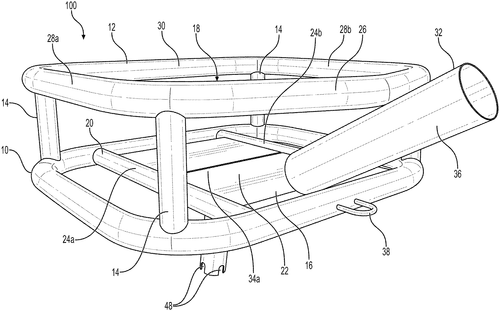
In the world of fishing gear, a new patent has been filed for an innovative fish fighting apparatus designed specifically for young anglers. This new apparatus features a sturdy base frame with vertical supports, an upper frame, a comfortable seat, rod holders, and a mounting assembly for attachment to a fishing vessel's gunwale. Competitors in the market may offer similar products, but this new invention stands out for its focus on empowering youth anglers to capture fish more easily and effectively. Imagine the joy and satisfaction a child could experience with this specialized fishing tool, making their fishing experiences memorable and successful. Will this fish fighting apparatus revolutionize the way children fish? How will established fishing gear companies respond to this invention tailored for young anglers? Let us know your thoughts in the comments below.
Abstract
The present disclosure provides an improved fish fighting apparatus that can be used by youth anglers, such as children, to assist in the capture of fish. The fish fighting apparatus includes a base frame having a plurality of vertical supports extending upwardly therefrom, an upper frame attached to the vertical supports and positioned above the base frame, a seat attached to the base frame, where the base frame, the upper frame, the vertical support, and the seat together define a seating area, a rod holder attached to the base frame and forming a pair of longitudinally spaced-apart openings between the base frame and the upper frame, and a mounting assembly attached to an underside of the seat and configured for mounting on a gunwale of a fishing vessel. The present disclosure provides an improved fish fighting apparatus that can be used by youth anglers, such as children, to assist in the capture of fish. The fish fighting apparatus includes a base frame having a plurality of vertical supports extending upwardly therefrom, an upper frame attached to the vertical supports and positioned above the base frame, a seat attached to the base frame, where the base frame, the upper frame, the vertical support, and the seat together define a seating area, a rod holder attached to the base frame and forming a pair of longitudinally spaced-apart openings between the base frame and the upper frame, and a mounting assembly attached to an underside of the seat and configured for mounting on a gunwale of a fishing vessel.
US Patent 12058992
****
"Revolutionary Self-Cleaning Clothing Invention Patented using Advanced Mineral and Detox Technology"
What is this invention?
Permeable and semi permeable substrate and substance
There's a creation so fine,
With permeable substrate in line,
Minerals, vitamins, too,
Detox formulas to renew,
Clothing self-cleaning, so divine.

A new patent has been filed showcasing a potentially groundbreaking invention that could revolutionize the way we approach cleanliness and detoxification. The proposed product is a permeable and semi-permeable substrate infused with minerals, vitamins, and detox formulas, aimed at self-cleaning and detoxifying clothing while it is being worn. Imagine a world where your outfit not only looks stylish but also actively purifies itself as you go about your day. This could have immense implications for healthcare settings, areas with high levels of toxins or radiation, and even in managing nuclear waste. Competing products in the market may soon have to step up their game if this invention comes to fruition. Utilizing innovative materials like silicas and ortho silicates, the invention allows for positive molecules and ions to diffuse through while blocking out negative ions and minerals. The potential applications of this technology are vast, from everyday wearables to specialized protective gear. But the question remains: Will this invention make the leap from patent to product? How would you envision incorporating self-cleaning and detoxifying clothing into your daily routine? Share your thoughts in the comments below.
Abstract
The present invention provides a permeable and options for semi-permeable inevitable substrate and substance made from minerals, vitamins, and detox formulas and is derived from the manufacturing process of the present invention. In one embodiment, the permeable inevitable substrate and substance may be used in clothing or other articles to be worn, in hospital settings, areas of nuclear waste, areas high in toxins, or areas of high radiation that may enable the radiation, the high energy levels and the toxins to activate the substrates and formulas that have been infused into clothing to self-clean and detox the clothing while it is being worn. In another embodiment, semi-permeable methods may be used by utilizing various forms of silicas and ortho silicates to ensure that positive molecules and ions are able to be diffused, while keeping out negative ions and minerals by diffusion or breaking apart the negative compositions. The present invention provides a permeable and options for semi-permeable inevitable substrate and substance made from minerals, vitamins, and detox formulas and is derived from the manufacturing process of the present invention. In one embodiment, the permeable inevitable substrate and substance may be used in clothing or other articles to be worn, in hospital settings, areas of nuclear waste, areas high in toxins, or areas of high radiation that may enable the radiation, the high energy levels and the toxins to activate the substrates and formulas that have been infused into clothing to self-clean and detox the clothing while it is being worn. In another embodiment, semi-permeable methods may be used by utilizing various forms of silicas and ortho silicates to ensure that positive molecules and ions are able to be diffused, while keeping out negative ions and minerals by diffusion or breaking apart the negative compositions.
US Patent 12058998
QUALCOMM Incorporated
"Innovative Radar Technology Patent Allows Communication Devices to Detect Human Body Parts Nearby"
What is this invention?
Radar for detecting human body part
Innovations detect hands that creep,
Near base stations, they take a peek.
Radar pulses transmitted with care,
Processed signals reveal what's there.
With tech advancements, safety can leap.
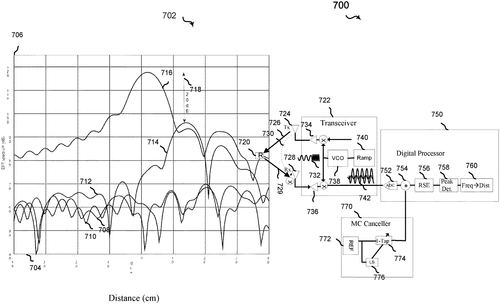
In a new patent by Qualcomm Incorporated, a novel system and method for detecting human body parts near communication devices has been unveiled. By utilizing radar pulses and adaptive processing techniques, this innovation aims to determine the presence of a body part, such as a hand, in proximity to the device. This technology could potentially revolutionize safety protocols for devices transmitting millimeter wave communication signals. Competitors in the market, such as Apple and Samsung, currently do not offer a similar feature in their devices, giving Qualcomm a potential edge in user safety and device performance. Imagine a smartphone that automatically detects when a user's hand is near the device, reducing the risk of interference or harm from millimeter wave signals. However, the practicality and implementation of this patent into actual products remain to be seen. Will consumers prioritize safety features like this in their device purchasing decisions, or will other factors take precedence? Share your thoughts on whether you would welcome this technology in your own devices in the comments below.
Abstract
Systems and methods for detecting a body part like a human hand near a base station or a user equipment are disclosed. A plurality of radar pulses is transmitted from a communication device in succession and the reflected plurality of radar pulses is received sampled and adaptively processed to remove transmit and receive antenna mutual coupling and clutter from stationary objects near the body part. In one aspect the adaptive processing is accomplished with a single tap adaptive filter. The processed signal may be used to determine if there is a human body part near the communication device allowing the device to determine whether it is safe for the device to transmit a millimeter wave communication signal. Systems and methods for detecting a body part like a human hand near a base station or a user equipment are disclosed. A plurality of radar pulses is transmitted from a communication device in succession and the reflected plurality of radar pulses is received sampled and adaptively processed to remove transmit and receive antenna mutual coupling and clutter from stationary objects near the body part. In one aspect the adaptive processing is accomplished with a single tap adaptive filter. The processed signal may be used to determine if there is a human body part near the communication device allowing the device to determine whether it is safe for the device to transmit a millimeter wave communication signal.
US Patent 12061286
QUALCOMM Incorporated
"Qualcomm Introduces Groundbreaking Video-Based Activity Recognition System Using 3D Modeling Technology"
What is this invention?
Object reconstruction using media data
In the realm of tech, a clever connection,
Video activity recognition, a new invention,
Generating 3D models with precision and care,
Masks and base models, the process is rare,
A dance of data, a digital reflection.
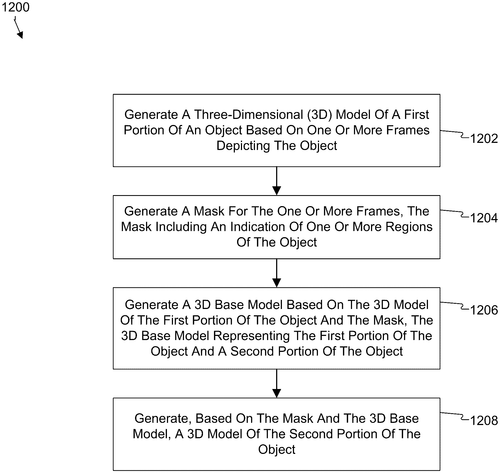
A recent patent from Qualcomm Incorporated promises advancements in video-based activity recognition through the creation of three-dimensional models of objects. This innovation involves generating detailed 3D models of various object portions, enhancing the ability to accurately recognize and track movements. Competitors in the tech industry, such as Google and Apple, have also delved into similar technologies for enhancing video recognition capabilities. However, Qualcomm's approach appears to offer a more detailed and nuanced understanding of objects in motion. The potential applications for this technology are vast, ranging from improving security surveillance systems to enhancing virtual reality experiences. Imagine a security camera that can not only detect movement but also identify specific objects and track their interactions in real-time. As we look to the future of video recognition technologies, one must consider whether the benefits of such detailed tracking and modeling outweigh potential privacy concerns. How do you envision this technology shaping our everyday interactions with video-based systems? Share your thoughts in the comments below.
Abstract
Systems and techniques are provided for performing video-based activity recognition. For example, a process can include generating a three-dimensional (3D) model of a first portion of an object based on one or more frames depicting the object. The process can also include generating a mask for the one or more frames, the mask including an indication of one or more regions of the object. The process can further include generating a 3D base model based on the 3D model of the first portion of the object and the mask, the 3D base model representing the first portion of the object and a second portion of the object. The process can include generating, based on the mask and the 3D base model, a 3D model of the second portion of the object. Systems and techniques are provided for performing video-based activity recognition. For example, a process can include generating a three-dimensional (3D) model of a first portion of an object based on one or more frames depicting the object. The process can also include generating a mask for the one or more frames, the mask including an indication of one or more regions of the object. The process can further include generating a 3D base model based on the 3D model of the first portion of the object and the mask, the 3D base model representing the first portion of the object and a second portion of the object. The process can include generating, based on the mask and the 3D base model, a 3D model of the second portion of the object.
US Patent 12062130
QUALCOMM Incorporated
"Qualcomm Patent Introduces Innovative Image Data Processing Technique for Enhanced Image Capture"
What is this invention?
Area efficient high dynamic range bandwidth compression
In the realm of image data so vast,
Techniques are honed, refined, and massed.
Pixels below or above a certain range,
Suppressed, then replaced, not a change too strange.
Through technology's lens, innovation is cast.
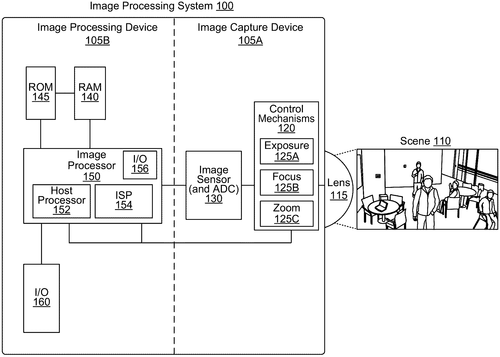
Patent news alert! QUALCOMM Incorporated has unveiled new techniques for processing image data. This innovation involves analyzing images with varying exposure times, identifying specific pixel values, and making adjustments to improve image quality. Think of it as a high-tech filter for your photos, ensuring only the best pixels make the final cut. Competitor's products like Adobe Lightroom and Google Photos may have some competition on their hands if these techniques come to market. Imagine using this technology in smartphones to enhance camera capabilities or in surveillance systems to improve image clarity in low-light environments. But the big question remains: Will QUALCOMM turn these patented techniques into a tangible product for consumers to enjoy? How do you think this innovation could impact the future of photography and image processing? Share your thoughts in the comments below!
Abstract
Techniques are described herein for processing image data. For instance, a technique can include obtaining a first image having a first exposure time and a second image having a second exposure time that is greater than the first exposure time. The technique can further include determining at least one of: that a first pixel of the first image has a first pixel value below a first threshold value; or that a second pixel of the second image has a second pixel value above a second threshold value; suppressing at least one of the first pixel or the second pixel based on the determination so as to prevent storing the first pixel or the second pixel; replacing the suppressed first pixel or second pixel based on a another pixel value; and outputting the first image or the second image, the first image or the second image including the another pixel. Techniques are described herein for processing image data. For instance, a technique can include obtaining a first image having a first exposure time and a second image having a second exposure time that is greater than the first exposure time. The technique can further include determining at least one of: that a first pixel of the first image has a first pixel value below a first threshold value; or that a second pixel of the second image has a second pixel value above a second threshold value; suppressing at least one of the first pixel or the second pixel based on the determination so as to prevent storing the first pixel or the second pixel; replacing the suppressed first pixel or second pixel based on a another pixel value; and outputting the first image or the second image, the first image or the second image including the another pixel.
US Patent 12062161
QUALCOMM Incorporated
"Qualcomm's Groundbreaking Vehicle-to-Vehicle Monitoring Patent Revolutionizes Safety on the Road"
What is this invention?
Vehicle monitoring
In the world of vehicle-to-vehicle tech,
Monitoring reports go direct,
With triggers and information obtained,
The monitor vehicle is trained,
To report the target's presence, what the heck!
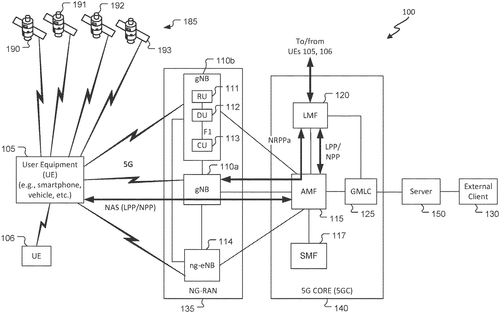
In a recent patent filed by QUALCOMM Incorporated, a method of vehicle-to-vehicle monitoring has been proposed. This innovative technology allows a monitor vehicle to receive a trigger to report on a target vehicle, obtain information identifying the target vehicle wirelessly, confirm the match between the obtained information and the target vehicle's identifying information, and then report the presence and location of the target vehicle. This development could potentially revolutionize how vehicles communicate with each other on the road, enhancing safety and efficiency. Imagine a future where cars can seamlessly share real-time data about their locations, helping to prevent accidents and congestion. Competitors in the market, such as Tesla with its Autopilot feature, may need to take note of this new advancement in vehicle monitoring. Will this patented technology by QUALCOMM Incorporated pave the way for a new era of connected transportation? How do you think this innovation could impact the future of autonomous driving? Share your thoughts in the comments below!
Abstract
A method of vehicle-to-vehicle monitoring includes: receiving, at a monitor vehicle, a trigger to provide a report relating to a target vehicle, the trigger including identifying information of the target vehicle; obtaining, at the monitor vehicle, first information wirelessly that at least partially identifies the target vehicle; determining, at the monitor vehicle, that the first information corresponds to the identifying information of the target vehicle; and reporting, from the monitor vehicle based on receipt of the trigger and determining that the first information corresponds to the identifying information of the target vehicle, second information indicating presence of the target vehicle and a location associated with the target vehicle. A method of vehicle-to-vehicle monitoring includes: receiving, at a monitor vehicle, a trigger to provide a report relating to a target vehicle, the trigger including identifying information of the target vehicle; obtaining, at the monitor vehicle, first information wirelessly that at least partially identifies the target vehicle; determining, at the monitor vehicle, that the first information corresponds to the identifying information of the target vehicle; and reporting, from the monitor vehicle based on receipt of the trigger and determining that the first information corresponds to the identifying information of the target vehicle, second information indicating presence of the target vehicle and a location associated with the target vehicle.
US Patent 12062270
QUALCOMM Incorporated
"Revolutionizing Energy Transfer: Qualcomm's Patent on Slant-Polarization Technology"
What is this invention?
Slanted polarization antenna
In the realm of energy transfer so grand,
Slant-polarization, elegant and grand.
Transmitting signals with a slant,
First and second, in a dance so gallant.
A symphony of waves, hand in hand.
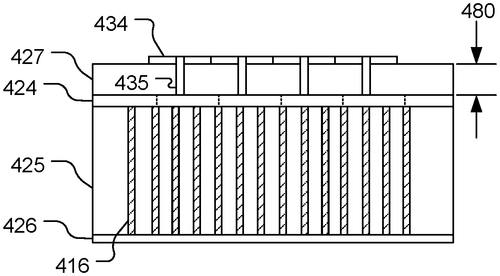
In a recent patent filed by QUALCOMM Incorporated, a method of slant-polarization energy transfer has been described. This innovative approach involves transmitting signals from complementary antenna elements in a slanted polarization manner, offering a potential leap forward in signal transmission technology. Competitors in the telecommunications industry, such as Huawei and Samsung, have been focusing on enhancing signal reception and transmission capabilities in their devices. This new method could provide QUALCOMM with a competitive edge if successfully implemented in their products. The potential uses of this technology are vast, ranging from improving signal strength and quality in smart devices to enhancing communication networks in urban environments with high interference levels. However, as with many patented technologies, the real question remains: Will this method of slant-polarization energy transfer be successfully integrated into consumer products? How soon can we expect to see this innovation in action in our everyday devices? Share your thoughts in the comments below.
Abstract
A method of slant-polarization energy transfer includes: at least one of: transmitting a first slanted polarization signal by: transmitting a first component signal of a first polarization from at least one first antenna element; and transmitting a second component signal of a second polarization from at least one second antenna element, the at least one first antenna element and the at least one second antenna element being complementary antenna elements; or receiving a second slanted polarization signal by: receiving a third component signal of the first polarization with the at least one first antenna element; and receiving a fourth component signal of the second polarization with the at least one second antenna element. A method of slant-polarization energy transfer includes: at least one of: transmitting a first slanted polarization signal by: transmitting a first component signal of a first polarization from at least one first antenna element; and transmitting a second component signal of a second polarization from at least one second antenna element, the at least one first antenna element and the at least one second antenna element being complementary antenna elements; or receiving a second slanted polarization signal by: receiving a third component signal of the first polarization with the at least one first antenna element; and receiving a fourth component signal of the second polarization with the at least one second antenna element.
US Patent 12062849
SAMSUNG ELECTRONICS CO., LTD.
"Innovative Cooking Apparatus Patented by Samsung Electronics: Featuring Smart Water Supply Control Valve"
What is this invention?
Cooking apparatus
In a kitchen, a magical gizmo,
With a steam generator that's limbo,
A water supply valve so neat,
Floats up when water's sweet,
Cooking perfection in techno disco.
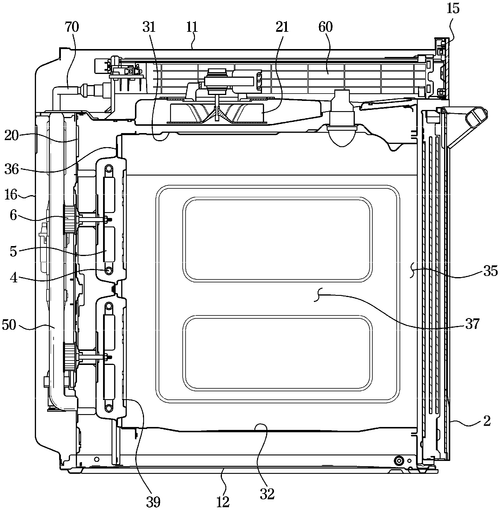
Innovation has struck again in the world of cooking appliances with Samsung Electronics Co., Ltd.'s latest patent for a cutting-edge cooking apparatus. This invention features a steam generator, a water supply device, and a water supply control valve designed to regulate the water level in the steam generator. The valve's unique design, with a float that adjusts based on water levels, promises a precise and efficient water supply mechanism. Competitors in the cooking appliance industry, such as LG and Whirlpool, may need to take note of Samsung's potential game-changer. This patented cooking apparatus could revolutionize how we prepare meals, offering a more controlled and automated cooking experience. Imagine the possibilities: a smart kitchen equipped with Samsung's cooking apparatus, effortlessly steaming vegetables, cooking rice to perfection, or even preparing delicate seafood dishes with precision. As we eagerly anticipate the development of this intriguing patent into a market-ready product, one question lingers: How might this innovation reshape the future of home cooking? Share your thoughts in the comments below.
Abstract
A cooking apparatus which includes a steam generator, and a water supply device to supply water to the steam generator, and a water supply control valve arranged between the water supply device and the steam generator and configured to adjust a level of water in the steam generator. The water supply control valve includes a housing, an inlet portion, and a float configured to move within the housing to open the inlet portion while a level of water in the housing is at a first level and move to move within the housing to close the inlet portion while the level of water in the housing is at a second level above the first level where the buoyancy of the float is greater than the gravity caused by the weight of the water supplied by the water supply device and to the water supply control valve. A cooking apparatus which includes a steam generator, and a water supply device to supply water to the steam generator, and a water supply control valve arranged between the water supply device and the steam generator and configured to adjust a level of water in the steam generator. The water supply control valve includes a housing, an inlet portion, and a float configured to move within the housing to open the inlet portion while a level of water in the housing is at a first level and move to move within the housing to close the inlet portion while the level of water in the housing is at a second level above the first level where the buoyancy of the float is greater than the gravity caused by the weight of the water supplied by the water supply device and to the water supply control valve.
US Patent 12059091
SAMSUNG ELECTRONICS CO., LTD.
"Samsung's Bio-Information Estimation Device Revolutionizes Cardiovascular Monitoring"
What is this invention?
Apparatus and method for estimating bio-information
In the realm of bio-information, they say,
An apparatus can estimate away,
By obtaining pulse waves from a user,
Extracting components to make them clearer,
Cardiovascular features in a new display.
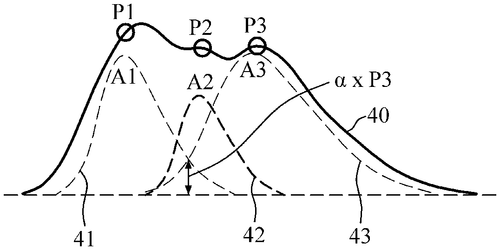
Samsung Electronics Co., Ltd. recently filed a patent for an intriguing apparatus that aims to estimate bio-information through pulse wave signals. The device utilizes a processor to extract components from various waveforms present in the pulse signal to obtain cardiovascular features. While the technology sounds promising, it enters a competitive market with existing wearable devices that track similar biometric data, such as Fitbit and Apple Watch. Potential uses for this bio-information estimating apparatus could include advanced health monitoring capabilities, personalized fitness tracking, and potentially even early detection of cardiovascular issues. With Samsung's reputation for innovation in the tech industry, it will be interesting to see if this patent evolves into a consumer product that can compete with established players in the wearables market. Will Samsung be able to revolutionize the way we monitor our health with this new technology, or will it face challenges breaking into an already crowded market? Share your thoughts on the potential impact of this bio-information estimating apparatus in the comments below.
Abstract
Provided is an apparatus for estimating bio-information. The apparatus for estimating bio-information according to an embodiment includes a processor configured to obtain a pulse wave signal from a user; extract components of a plurality of element waveforms which constitute a waveform of the pulse wave signal; and obtain a cardiovascular feature based on the extracted components of the plurality of element waveforms. The processor is configured to extract a component of at least one element waveform based on a component of an adjacent element waveform. Provided is an apparatus for estimating bio-information. The apparatus for estimating bio-information according to an embodiment includes a processor configured to obtain a pulse wave signal from a user; extract components of a plurality of element waveforms which constitute a waveform of the pulse wave signal; and obtain a cardiovascular feature based on the extracted components of the plurality of element waveforms. The processor is configured to extract a component of at least one element waveform based on a component of an adjacent element waveform.
US Patent 12059273
SAMSUNG ELECTRONICS CO., LTD.
"Samsung Patent Unveils Game-Changing Heterocyclic Compound for Organic Light-Emitting Devices"
What is this invention?
Heterocyclic compound, composition including the same, and organic light-emitting device including the heterocyclic compound
In labs where molecules are spun,
Formula 1 shines like the sun,
In compositions we find
This compound so refined,
Light up screens with tech that's just begun.
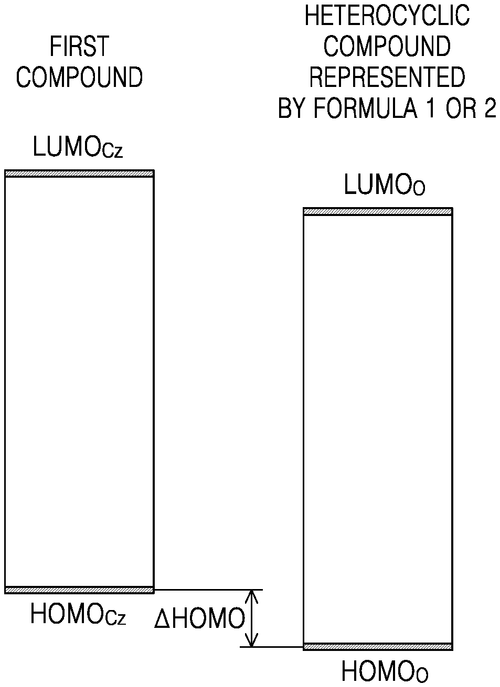
In a recent patent filing, Samsung Electronics introduced a new heterocyclic compound that could revolutionize the world of organic light-emitting devices. This compound, represented by Formula 1, shows promise in enhancing the performance and efficiency of such devices. Competitors in the field, like LG and Sony, have been pushing the boundaries of OLED technology in recent years. With Samsung's new compound, they may have found a key ingredient to leapfrog the competition. Imagine a future where your smartphone screen is brighter, more energy efficient, and perhaps even flexible thanks to this innovative compound. This technology could also have applications in televisions, wearables, and even smart home devices. But the question remains: Will Samsung be able to effectively translate this patent into a market-ready product? What challenges lie ahead in bringing this exciting innovation to consumers? Let us know your thoughts below.
Abstract
A heterocyclic compound represented by Formula 1, a composition including the same, and an organic light-emitting device including the heterocyclic compound:A heterocyclic compound represented by Formula 1, a composition including the same, and an organic light-emitting device including the heterocyclic compound:
US Patent 12060344
SAMSUNG ELECTRONICS CO., LTD.
"Samsung Unveils Breakthrough in Nanocrystal Technology for Blue Light Emission"
What is this invention?
Semiconductor nanocrystal particles and devices including the same
In a nanocrystal deep in the tech world,
Zinc and indium together are twirled,
Phosphorus joins the mix,
Creating blue light fix,
A marvel of science unfurled.
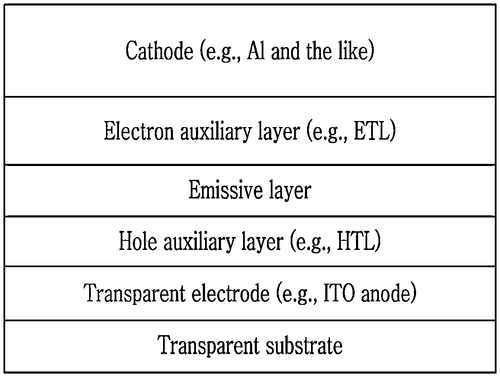
In the realm of cutting-edge technology, Samsung Electronics Co., Ltd. has unveiled a patent for a semiconductor nanocrystal particle that emits blue light with exceptional precision. This innovative creation boasts a unique composition featuring indium, zinc, and phosphorus, setting it apart from its competitors in the market. While the technical details may be complex, the potential applications of this semiconductor nanocrystal are staggering. Imagine the possibilities - from ultra-vivid display screens to advanced medical imaging technology, the impact of this invention could revolutionize various industries. As we look towards the future, one can't help but wonder: Will Samsung be able to translate this patent into a consumer product that will reshape the way we interact with technology? Share your thoughts in the comments below.
Abstract
Disclosed are a semiconductor nanocrystal particle including indium (In), zinc (Zn), and phosphorus (P), wherein a mole ratio of the zinc relative to the indium is greater than or equal to about 25:1, and the semiconductor nanocrystal particle includes a core including a first semiconductor material including indium, zinc, and phosphorus and a shell disposed on the core and including a second semiconductor material including zinc and sulfur, a method of producing the same, and an electronic device including the same. The semiconductor nanocrystal particle emits blue light having a maximum peak emission at a wavelength of less than or equal to about 470 nanometers. Disclosed are a semiconductor nanocrystal particle including indium (In), zinc (Zn), and phosphorus (P), wherein a mole ratio of the zinc relative to the indium is greater than or equal to about 25:1, and the semiconductor nanocrystal particle includes a core including a first semiconductor material including indium, zinc, and phosphorus and a shell disposed on the core and including a second semiconductor material including zinc and sulfur, a method of producing the same, and an electronic device including the same. The semiconductor nanocrystal particle emits blue light having a maximum peak emission at a wavelength of less than or equal to about 470 nanometers.
US Patent 12060510
SAMSUNG ELECTRONICS CO., LTD.
Revolutionary new quantum dot technology developed by Samsung Electronics sets a new standard in efficiency and emission precision.
What is this invention?
Core-shell quantum dots having high quantum efficiency, and an electronic device including the same
In a quantum dot so fine and grand,
Indium, phosphorus take a grandstand,
With shells of zinc and selenium band,
Doped with metals to make them bland,
Efficiency high, emission peak so grand.
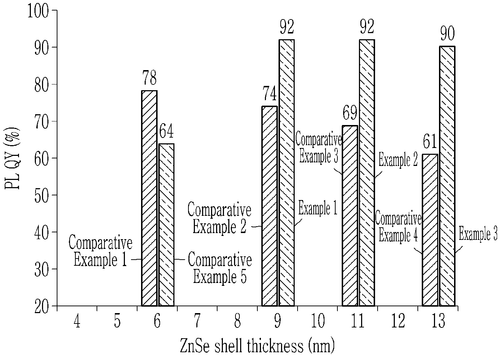
In the ever-evolving world of technology, Samsung Electronics Co., Ltd. has recently been granted a patent for a groundbreaking quantum dot innovation. This quantum dot, made without the use of cadmium, boasts an impressive quantum efficiency of over 70% and emits light with a precision of less than 40 nanometers. This advancement puts Samsung in direct competition with other major players in the display technology industry, such as LG and Sony. The potential applications for this technology are vast and exciting. Imagine ultra-high-definition displays with unmatched color accuracy and brightness, or energy-efficient lighting solutions that revolutionize the way we illuminate our homes and cities. However, as with many patented technologies, the real question remains: Will Samsung be able to transform this quantum dot invention into a tangible product that reaches the hands of consumers? How do you think this innovation will impact the future of displays and lighting technology? Share your thoughts in the comments below.
Abstract
A quantum dot including a semiconductor nanocrystal core including indium (In) and phosphorus (P) and a semiconductor nanocrystal shell disposed on the semiconductor nanocrystal core, the semiconductor nanocrystal shell including zinc (Zn) and selenium (Se), wherein the semiconductor nanocrystal shell is doped with a dopant metal having a larger ion radius than a radius of an Zn2+ ion, the quantum dot does not include cadmium, and the quantum dot has a quantum efficiency of greater than or equal to about 70% and a full width at half maximum (FWHM) of an emission peak of less than or equal to about 40 nanometers (nm), and an electroluminescent device including the same. A quantum dot including a semiconductor nanocrystal core including indium (In) and phosphorus (P) and a semiconductor nanocrystal shell disposed on the semiconductor nanocrystal core, the semiconductor nanocrystal shell including zinc (Zn) and selenium (Se), wherein the semiconductor nanocrystal shell is doped with a dopant metal having a larger ion radius than a radius of an Zn2+ ion, the quantum dot does not include cadmium, and the quantum dot has a quantum efficiency of greater than or equal to about 70% and a full width at half maximum (FWHM) of an emission peak of less than or equal to about 40 nanometers (nm), and an electroluminescent device including the same.
US Patent 12060511
Samsung Electronics Co., Ltd.
"Samsung Patent Revolutionizes Cleaning Tech with Rotating Dust Collector"
What is this invention?
Dust collector and cleaner having the same
In a home, a cleaner is found,
With suction head and dust collector sound,
A fan motor creates suction force,
In a dust collector, the debris source,
A rotating body spins around.
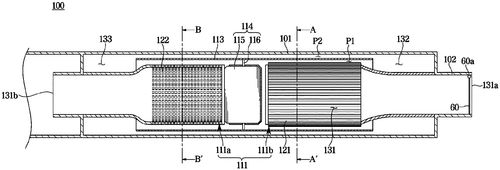
In a recent patent filing by Samsung Electronics Co., Ltd., a new cleaner has been designed to revolutionize the way we tackle household cleaning. This innovative device boasts a suction head, dust collector, and fan motor to efficiently suck up dirt and debris. What sets this cleaner apart is its unique dust collector, which includes a rotating body within a housing, promising to enhance cleaning capabilities. Competing with established products from brands like Dyson and Roomba, Samsung's cleaner showcases potential for a more thorough and convenient cleaning experience. Imagine effortlessly maneuvering this device around your home, while its powerful suction and rotating mechanism ensure no dust or dirt is left behind. But the big question remains: Will Samsung bring this patented cleaner to market, and if so, how will it stack up against the competition? Share your thoughts in the comments below - are you excited about this potential new addition to the world of cleaning technology?
Abstract
A cleaner is provided. The cleaner includes a suction head, a dust collector connected to the suction head, and a fan motor provided to generate a suction force inside the dust collector, wherein the dust collector comprises a housing having an inlet and an outlet, a fixed body arranged inside the housing, and a rotating body rotatably provided between the housing and the fixed body. A cleaner is provided. The cleaner includes a suction head, a dust collector connected to the suction head, and a fan motor provided to generate a suction force inside the dust collector, wherein the dust collector comprises a housing having an inlet and an outlet, a fixed body arranged inside the housing, and a rotating body rotatably provided between the housing and the fixed body.
US Patent 12059122
Samsung Electronics Co., Ltd.
"Innovation Alert: Samsung's Patent Revolutionizes Laundry with Dye Contamination Detection in Washing Machines"
What is this invention?
Washing machine and method of controlling the same
In the realm of tech so surreal,
A washing machine with a steel wheel,
It detects dye in water,
Making laundry look hotter,
Innovation to enhance the clean feel!
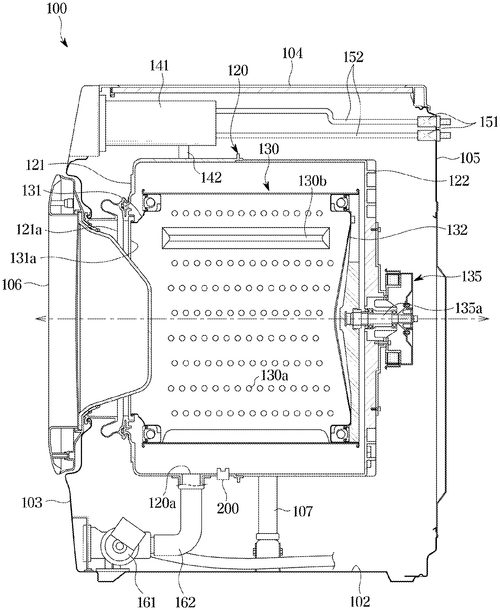
Samsung is diving into laundry innovation with a new patent for a washing machine that aims to tackle the issue of water contamination from dyes. This futuristic appliance comes equipped with an optical sensor that can detect dye in the water and prevent your laundry from getting stained. The machine is programmed to automatically adjust the washing time based on the intensity of various light wavelengths it detects, promising a thorough and efficient clean. While this technological advancement could revolutionize the way we do laundry, one might wonder how it stacks up against competitors' products in the market. Will this innovation be a game-changer for households dealing with pesky dye stains, or is it just a flashy concept that will never see the light of day? What do you think? Would you invest in a dye-detecting washing machine, or do you prefer traditional laundry methods? Share your thoughts below.
Abstract
An aspect of the present disclosure is to provide a washing machine that detects contamination of water due to a dye and prevents contamination of laundry due to the dye. The washing machine includes a tub; a drum configured to be rotatable inside of the tub; a detergent supplier configured to supply a detergent to the tub; a water supplier configured to supply a water to the tub; an optical sensor provided under the tub, wherein the optical sensor includes a light emitting element and a light receiving element configured to selectively receive a plurality of visible rays having different wavelengths and an infrared ray among a light emitted from the light emitting element; and a controller configured to control the water supplier to supply the detergent and the water to the tub and rotate the drum during a washing. In addition, the controller may reduce the washing time based on the sum of the received intensities of the plurality of visible rays and the received intensity of the infrared ray. An aspect of the present disclosure is to provide a washing machine that detects contamination of water due to a dye and prevents contamination of laundry due to the dye. The washing machine includes a tub; a drum configured to be rotatable inside of the tub; a detergent supplier configured to supply a detergent to the tub; a water supplier configured to supply a water to the tub; an optical sensor provided under the tub, wherein the optical sensor includes a light emitting element and a light receiving element configured to selectively receive a plurality of visible rays having different wavelengths and an infrared ray among a light emitted from the light emitting element; and a controller configured to control the water supplier to supply the detergent and the water to the tub and rotate the drum during a washing. In addition, the controller may reduce the washing time based on the sum of the received intensities of the plurality of visible rays and the received intensity of the infrared ray.
US Patent 12060668
Samsung Electronics Co., Ltd.
"Samsung Develops New Amorphous Boron Nitride Film for Anti-Reflection Coating"
What is this invention?
Amorphous boron nitride film and anti-reflection coating structure including the same
A film of boron nitride so rare,
With structures that are quite debonair,
Hybrid bonds intertwined,
Innovation defined,
Less than 20% sp3, oh how fair!

Samsung Electronics Co., Ltd. has recently patented a new amorphous boron nitride film and anti-reflection coating structure. This innovative film boasts a unique structure that includes both sp3 and sp2 hybrid bonds, with the ratio of sp3 hybrid bonds being less than 20%. This technology could potentially revolutionize anti-reflection coatings in various electronic devices, offering improved optical performance and durability. Competing products in the market currently offer similar anti-reflection coatings, but Samsung's patented boron nitride film presents a promising alternative with its distinct structure and composition. Imagine the possibilities of this technology being implemented in smartphone screens, camera lenses, or even solar panels, enhancing visibility and efficiency. As we look towards the future of display technology, one can't help but wonder: Will Samsung's innovative boron nitride film set a new standard for anti-reflection coatings in consumer electronics? Share your thoughts in the comments below.
Abstract
Provided are an amorphous boron nitride film and an anti-reflection coating structure including the amorphous boron nitride film. The amorphous boron nitride film has an amorphous structure including an sp3 hybrid bond and an sp2 hybrid bond, in which a ratio of the sp3 hybrid bond in the amorphous boron nitride film is less than about 20%. Provided are an amorphous boron nitride film and an anti-reflection coating structure including the amorphous boron nitride film. The amorphous boron nitride film has an amorphous structure including an sp3 hybrid bond and an sp2 hybrid bond, in which a ratio of the sp3 hybrid bond in the amorphous boron nitride film is less than about 20%.
US Patent 12061312
Samsung Electronics Co., Ltd.
"Samsung Patent Revolutionizes Display Technology with Thinner Design and Enhanced Color Reproducibility"
What is this invention?
Display device
In a display, sleek and advanced,
Color vivid, structure enhanced;
LED chip, light source plate,
Wavelengths alter, colors to elate,
Tech poetry in form entranced.
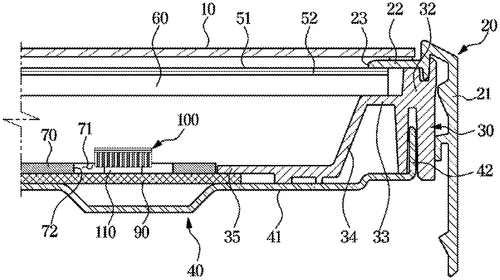
Samsung Electronics Co., Ltd. has filed a patent for a display device promising enhanced color reproducibility and reduced thickness through an innovative structure. This device features a liquid crystal panel, a light source plate with an LED chip, and a chip cover that modifies the light emitted by the LED chip. By incorporating a cover layer, light conversion member, and barrier layer, Samsung aims to push the boundaries of display technology. Competitor products such as OLED displays and high-end LCD screens may face some tough competition if Samsung's patent comes to fruition. With the potential for improved color accuracy and a thinner form factor, this display device could find applications in smartphones, tablets, and even augmented reality devices. But the big question remains: Will Samsung be able to translate this patent into a market-ready product that revolutionizes the display industry? How do you think other tech giants will respond to this potential game-changer in display technology? Share your thoughts below.
Abstract
A display device may have a reduced thickness while having enhanced color reproducibility by having an improved structure. The display device may include: a liquid crystal panel; a light source plate which is arranged at the rear of the liquid crystal panel to provide light to the liquid crystal panel, and which includes a printed circuit board and an LED chip mounted on the printed circuit board; and a chip cover which is provided to cover a light-emitting surface of the LED chip, and which changes the wavelength of the light emitted from the LED chip, wherein the chip cover includes: a cover layer having a first surface arranged to face the light-emitting surface of the LED chip, a second surface opposite to the first surface, and an accommodating groove provided on the second surface; a light conversion member which changes the wavelength of the light emitted from the LED chip, and which is accommodated in the accommodating groove; and a barrier layer for covering the second surface to cover the light conversion member from the outside. A display device may have a reduced thickness while having enhanced color reproducibility by having an improved structure. The display device may include: a liquid crystal panel; a light source plate which is arranged at the rear of the liquid crystal panel to provide light to the liquid crystal panel, and which includes a printed circuit board and an LED chip mounted on the printed circuit board; and a chip cover which is provided to cover a light-emitting surface of the LED chip, and which changes the wavelength of the light emitted from the LED chip, wherein the chip cover includes: a cover layer having a first surface arranged to face the light-emitting surface of the LED chip, a second surface opposite to the first surface, and an accommodating groove provided on the second surface; a light conversion member which changes the wavelength of the light emitted from the LED chip, and which is accommodated in the accommodating groove; and a barrier layer for covering the second surface to cover the light conversion member from the outside.
US Patent 12061396
Samsung Electronics Co., Ltd.
"Samsung's Innovative Storage Device Features Dynamic Interface Tuning Capability"
What is this invention?
Storage device for tuning an interface with a host
In the world of tech and its trends,
A storage device proudly defends,
With a controller so smart,
It tunes every part,
And connects with the hosts 'til it blends.
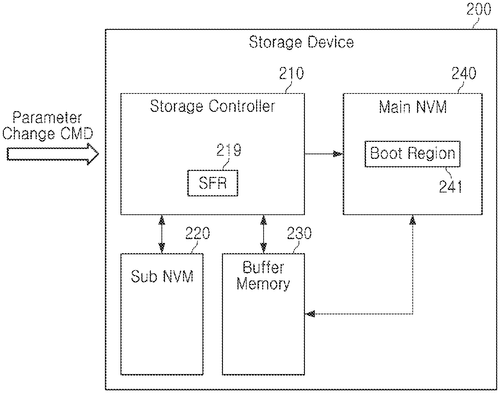
In a recent patent application, Samsung Electronics Co., Ltd. has introduced a storage device featuring a unique controller that can dynamically adjust connection characteristics with a host device. This innovation allows the controller to receive commands from the host, extract specific parameters, and fine-tune the interface accordingly to optimize performance. Competitors in the storage device market, such as Western Digital and Seagate, may need to take notice of this potential game-changer. Imagine a future where your storage device can adapt on the fly to meet the specific needs of different host devices, providing a more seamless and efficient user experience. Will Samsung be able to translate this patented technology into a consumer product that revolutionizes the storage industry? How might this adaptive interface capability impact the way we interact with our devices in the future? Share your thoughts in the comments below!
Abstract
A storage device includes a main non-volatile memory and a controller communicating with a host according to a predetermined interface protocol and controlling the main non-volatile memory. The controller includes a special function register (SFR) storing parameters indicating connection characteristics between the storage device and the host. The controller receives a parameter change command according to the interface protocol from the host, extracts one or more descriptors respectively including an SFR address and a parameter value corresponding to a target parameter to be changed from the parameter change command, and tunes an interface by executing the one or more descriptors to write the parameter value into the SFR. A storage device includes a main non-volatile memory and a controller communicating with a host according to a predetermined interface protocol and controlling the main non-volatile memory. The controller includes a special function register (SFR) storing parameters indicating connection characteristics between the storage device and the host. The controller receives a parameter change command according to the interface protocol from the host, extracts one or more descriptors respectively including an SFR address and a parameter value corresponding to a target parameter to be changed from the parameter change command, and tunes an interface by executing the one or more descriptors to write the parameter value into the SFR.
US Patent 12061808
Apple Inc.
"Innovative Patent from Apple: Multimedia Device Uses Acoustic Signals to Identify Audio Devices"
What is this invention?
Acoustic identification of audio products
In a land of tech innovation so bright,
A multimedia device takes flight,
Identifying audio with grace,
Using acoustic playback in the race,
Selecting the best candidate in sight.
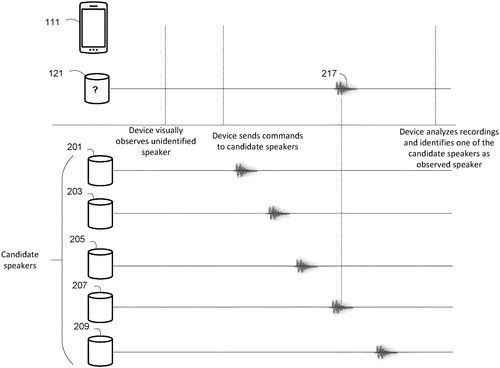
Apple Inc. has filed a patent for a potential new feature in multimedia devices that aims to revolutionize the way audio devices are identified. The patent describes a system where a multimedia device with audio and video capabilities can identify an audio device through acoustic playback signals when video capture fails to do so. This innovation could have significant implications for the user experience, allowing for seamless recognition of audio devices. Competitors in the tech industry, such as Samsung and Google, currently offer similar features in their devices, but Apple's proposed method seems to take it a step further by utilizing acoustic identification signals unique to each audio device. Imagine the convenience of simply playing an acoustic signal to detect and pair with audio devices in your environment effortlessly. This could streamline the process of connecting Bluetooth speakers, headphones, and other audio peripherals with your multimedia device. However, as with any patent, the question remains: will this technology actually make it to the market? How would consumers respond to such a feature, and would it truly enhance their overall experience with multimedia devices? Share your thoughts below on whether you see this innovation becoming a reality and how it could impact your daily tech interactions.
Abstract
Disclosed are techniques for a multimedia device with audio and video capturing capability to identify an audio device based on acoustic playback signal if the audio device cannot be identified from captured video. The multimedia device may assemble a list of candidate audio devices that are a possible match for the observed audio device from a database of previously recognized audio devices and may transmit commands to the candidate audio devices to play acoustic identification signals. The acoustic identification signals may be audible sound or ultrasonic tone sequences with embedded identification information unique to each audio device. The multimedia device may record and analyze the acoustic identification signals received from any of the candidate audio devices to construct metrics to select the most likely candidate for the observed audio device. The metrics may include time of flight, direction of arrival, received amplitude, direct-to-reverberant ratio (DRR) of the acoustic identification signals. Disclosed are techniques for a multimedia device with audio and video capturing capability to identify an audio device based on acoustic playback signal if the audio device cannot be identified from captured video. The multimedia device may assemble a list of candidate audio devices that are a possible match for the observed audio device from a database of previously recognized audio devices and may transmit commands to the candidate audio devices to play acoustic identification signals. The acoustic identification signals may be audible sound or ultrasonic tone sequences with embedded identification information unique to each audio device. The multimedia device may record and analyze the acoustic identification signals received from any of the candidate audio devices to construct metrics to select the most likely candidate for the observed audio device. The metrics may include time of flight, direction of arrival, received amplitude, direct-to-reverberant ratio (DRR) of the acoustic identification signals.
US Patent 12061278
Apple Inc.
"Apple's Futuristic Head-Mounted Device Adjusts to Your Interpupillary Distance"
What is this invention?
Head-mounted electronic display device with lens position sensing
In a head-mounted device so grand,
Display pixels arrayed on demand.
With left and right lens,
Adjust as you sense,
A tech marvel, perfectly planned.
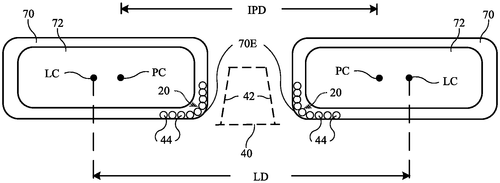
A new patent from Apple Inc. describes a head-mounted device that features two pixel arrays displaying content for the user. The device includes left and right lens modules that are positioned using sensing circuitry to detect the user's nose position. This innovation aims to provide a comfortable viewing experience by adjusting the lens positions based on the user's interpupillary distance. Competitors like Facebook's Oculus Rift and HTC Vive have already established themselves in the virtual reality market, but Apple's patent hints at a potential leap forward in user experience. Imagine seamlessly watching movies, playing games, or attending virtual meetings with personalized lens adjustments for maximum comfort. Will Apple bring this patent to life and revolutionize the way we interact with augmented reality? Share your thoughts on the feasibility and potential impact of this technology in the comments below.
Abstract
A head-mounted device may have a display with first and second pixel arrays that display content for a user. A head-mounted support structure in the device supports the pixel arrays on the head of the user. A left positioner may be used to position a left lens module that includes a left lens and the first pixel array. A right positioner may be used to position a right lens module that includes a right lens and the second pixel array. Sensing circuitry such as proximity sensing circuitry may be used to detect relative positions between the left and right lens modules and facing surfaces of a user's nose while the user is wearing the head-mounted support structure. Control circuitry may adjust the positions of the left and right lens modules using interpupillary distance information for the user and using information from the sensing circuitry. A head-mounted device may have a display with first and second pixel arrays that display content for a user. A head-mounted support structure in the device supports the pixel arrays on the head of the user. A left positioner may be used to position a left lens module that includes a left lens and the first pixel array. A right positioner may be used to position a right lens module that includes a right lens and the second pixel array. Sensing circuitry such as proximity sensing circuitry may be used to detect relative positions between the left and right lens modules and facing surfaces of a user's nose while the user is wearing the head-mounted support structure. Control circuitry may adjust the positions of the left and right lens modules using interpupillary distance information for the user and using information from the sensing circuitry.
US Patent 12061345
Apple Inc.
"Apple's Cutting-Edge Patent Revolutionizes Page Pool Management for Processing Work"
What is this invention?
Memory page manager
In the realm of technology so vast,
Page pools and processors are cast,
With page manager circuitry at play,
Allocating work in a clever way,
Efficient and quick, for tasks that last.
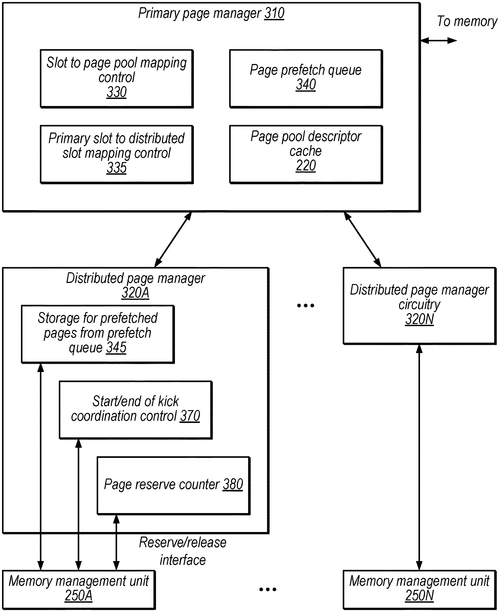
In a recent patent filed by Apple Inc., new techniques have been outlined for managing page pools for sets of processing work. The innovative system involves a processor assigning processing work to primary slots, with page manager circuitry maintaining page pool descriptor information in memory. This information is crucial for allocating memory pages to various page pools and mapping primary slots to specific pools for efficient data retrieval. This groundbreaking technology could revolutionize how processing work is handled, potentially offering faster and more streamlined performance compared to current competitor products. Imagine seamless multitasking capabilities and improved efficiency in handling complex computational tasks. But the question remains: Will Apple bring this concept to life in a tangible product for consumers to experience firsthand, or will it remain a patent filed away in the depths of technological innovation? How would you envision utilizing this advanced page management system in your daily life or work environment? Share your thoughts in the comments below.
Abstract
Techniques are disclosed relating to managing page pools for sets of processing work. In some embodiments, a processor assigns sets of processing work to respective primary slots. Page manager circuitry may maintain, in a memory, page pool descriptor information for memory pages allocated to multiple different page pools, maintain a mapping of multiple primary slots of the processor circuitry to a first page pool of the page pools, and cache page pool descriptor entries in the page pool descriptor cache. The page manager circuitry may provide pages to requesting client circuitry from the first page pool for the multiple mapped primary slots. In some embodiments, the page manager circuitry pre-fetches virtual pages. The page manager circuitry may include primary and distribute components. Techniques are disclosed relating to managing page pools for sets of processing work. In some embodiments, a processor assigns sets of processing work to respective primary slots. Page manager circuitry may maintain, in a memory, page pool descriptor information for memory pages allocated to multiple different page pools, maintain a mapping of multiple primary slots of the processor circuitry to a first page pool of the page pools, and cache page pool descriptor entries in the page pool descriptor cache. The page manager circuitry may provide pages to requesting client circuitry from the first page pool for the multiple mapped primary slots. In some embodiments, the page manager circuitry pre-fetches virtual pages. The page manager circuitry may include primary and distribute components.
US Patent 12061545
Apple Inc.
"Apple Patents Groundbreaking Wearable Device Control System for Electronic Devices"
What is this invention?
Electronic device system with ring devices
In a system of devices that thrive,
Users control them to their delight,
Wearables and sensors combine,
To track and identify, align,
Feedback guides, adjustments arrive.
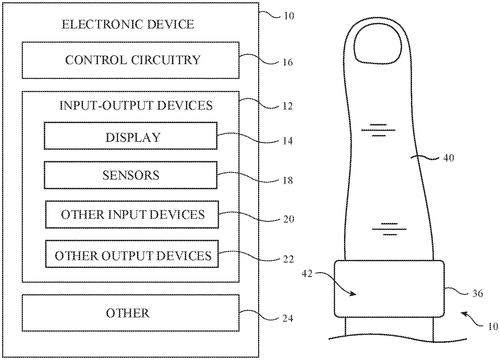
Apple Inc. has recently filed a patent for a new system that allows users to control electronic devices using wearable devices or other gadgets. This innovative technology includes features such as gaze tracking sensors, orientation sensors, and other sensor circuitry to help users identify and interact with specific electronic devices in a system. While there are already similar products on the market that offer control of electronic devices through wearable technology, Apple's patent introduces unique functionalities such as visual, audio, and haptic feedback to enhance the user experience. Additionally, the ability to adjust operating parameters and perform health monitoring operations sets this system apart from its competitors. The potential uses for this technology are vast, ranging from seamless control of smart home devices to enhancing productivity in the workplace. Imagine being able to effortlessly switch between devices with just a glance or track your health metrics in real-time without any additional equipment. As we await further developments on this patent from Apple, one can't help but wonder: How would this system revolutionize the way we interact with technology on a daily basis? Share your thoughts in the comments below.
Abstract
Electronic devices in a system may be controlled by a user. The user may have one or more wearable devices or other devices. A user's device may be used by the user in identifying a target electronic device of interest among the electronic devices in the system. The target electronic device may be identified using a gaze tracking sensor that senses the user's point-of-gaze, an orientation sensor that detects a direction in which the user's device is pointed, or other sensor circuitry. Visual feedback, audio feedback, and/or haptic feedback may be provided to the user to confirm which electronic device has been identified as a target electronic device of interest. User input may be gathered by sensors and used in adjusting operating parameters in the target electronic device of interest. Health monitoring operations and other operations may also be performed. Electronic devices in a system may be controlled by a user. The user may have one or more wearable devices or other devices. A user's device may be used by the user in identifying a target electronic device of interest among the electronic devices in the system. The target electronic device may be identified using a gaze tracking sensor that senses the user's point-of-gaze, an orientation sensor that detects a direction in which the user's device is pointed, or other sensor circuitry. Visual feedback, audio feedback, and/or haptic feedback may be provided to the user to confirm which electronic device has been identified as a target electronic device of interest. User input may be gathered by sensors and used in adjusting operating parameters in the target electronic device of interest. Health monitoring operations and other operations may also be performed.
US Patent 12061680
Apple Inc.
"Apple's Patented Head-Mountable Device Guides Users for Optimal Comfort and Alignment"
What is this invention?
Fit guidance for head-mountable devices
There once was a device so fine,
That helped align components with a shine.
Sensors to detect, features to track,
User comfort ensured, no need to backtrack.
Optimal placement achieved, every time.
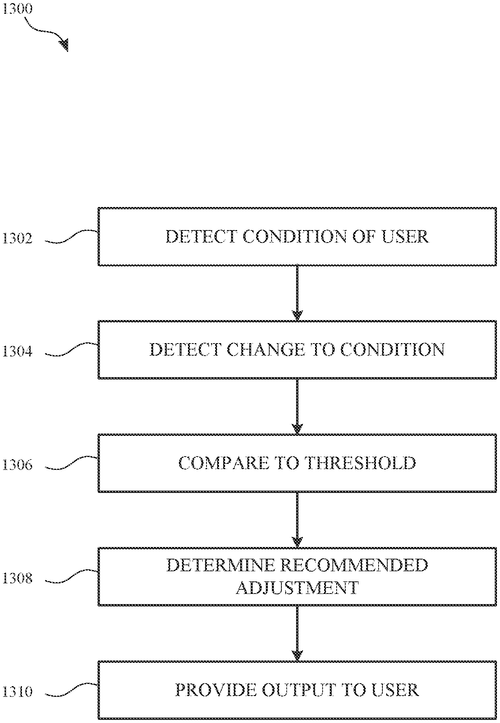
Apple Inc. has recently patented a head-mountable device and accompanying electronic device that aims to provide users with guidance on the optimal placement of the head-mounted device. This innovation utilizes sensors to detect features of the user's face, the distribution of forces when worn, and alignment with the face, such as the eyes. Additionally, the technology can track adjustments and infer user discomfort based on changes in positioning and facial features during use. With the rise of virtual reality (VR) and augmented reality (AR) devices in the market, this patented technology could potentially revolutionize the user experience by ensuring comfort and optimal alignment of components, ultimately leading to a more immersive and enjoyable interaction with such devices. Competitors in the industry, like Oculus and Microsoft's HoloLe. ns, may need to take note of Apple's advancements in this area. Imagine a world where wearing VR or AR headsets for extended periods becomes effortless and comfortable, without the need for constant readjustments. This innovation could also have applications beyond the realm of consumer tech, possibly in medical fields for precise alignment in surgeries or in sports for enhancing performance analysis. As exciting as this patent sounds, the question remains: will Apple bring this technology to market in the near future, and if so, how will it shape the landscape of VR and AR devices? Share your thoughts on the practicality and potential impact of this invention in the comments below.
Abstract
A head-mountable device and/or another electronic device can provide guidance for optimal placement of the head-mountable device. The head-mountable device and/or another electronic device can be operated to guide a user to position the head-mountable device in a manner that will achieve proper alignment of components with respect to the user and maximize user comfort. For example, the head-mountable device and/or another device can include sensors for detecting features of the user's face, forces distributed on the face when worn, and/or alignment with the face (e.g., eyes). By further example, the head-mountable device and/or another device can detect changes in adjustment and infer user discomfort based on the frequency and/or magnitude of such changes. By further example, the head-mountable device and/or another device can detect changes in features of the user's face before, during, and/or after use of the head-mountable device. A head-mountable device and/or another electronic device can provide guidance for optimal placement of the head-mountable device. The head-mountable device and/or another electronic device can be operated to guide a user to position the head-mountable device in a manner that will achieve proper alignment of components with respect to the user and maximize user comfort. For example, the head-mountable device and/or another device can include sensors for detecting features of the user's face, forces distributed on the face when worn, and/or alignment with the face (e.g., eyes). By further example, the head-mountable device and/or another device can detect changes in adjustment and infer user discomfort based on the frequency and/or magnitude of such changes. By further example, the head-mountable device and/or another device can detect changes in features of the user's face before, during, and/or after use of the head-mountable device.
US Patent 12061735
Canon Kabushiki Kaisha
"Innovative Radiographing System Utilizes Smart Determination of Automatic Exposure Control Function"
What is this invention?
Radiographing system, radiographing method, and storage medium
In a radiographing system so grand,
Radiation streams to the land,
Detection apparatus at hand,
Communication they understand,
To control exposure as planned.

In the world of radiography, Canon Kabushiki Kaisha has filed a patent for a cutting-edge radiographing system that promises to revolutionize the field. This system features a radiation generation apparatus, a radiation detection apparatus, and a radiographing apparatus that work seamlessly together to produce high-quality radiographic images. One standout feature of this system is its ability to determine whether the radiation detection apparatus includes an automatic exposure control function, ensuring optimal image quality with minimal user intervention. This innovation sets it apart from competitors in the market, who may not offer such advanced capabilities. Imagine the potential uses of this technology in healthcare settings, where precise and efficient radiographic imaging is crucial for accurate diagnostics and treatment planning. The seamless communication between the components of the system could streamline workflows and improve overall patient care. As we look towards the future of radiography, one can't help but wonder: Will this patent pave the way for a new standard in radiographic imaging technology? Share your thoughts in the comments below.
Abstract
A radiographing system includes a radiation generation apparatus emitting a radiation, a radiation detection apparatus detecting the radiation to generate a radiographic image, and a radiographing apparatus controlling operation of the radiation detection apparatus by communicating with the radiation detection apparatus. The radiographing system further includes an acquisition unit configured to acquire information about the radiation detection apparatus, and a determination unit configured to determine whether the radiation detection apparatus includes an automatic exposure control (AEC) function, based on the information about the radiation detection apparatus acquired by the acquisition unit. A radiographing system includes a radiation generation apparatus emitting a radiation, a radiation detection apparatus detecting the radiation to generate a radiographic image, and a radiographing apparatus controlling operation of the radiation detection apparatus by communicating with the radiation detection apparatus. The radiographing system further includes an acquisition unit configured to acquire information about the radiation detection apparatus, and a determination unit configured to determine whether the radiation detection apparatus includes an automatic exposure control (AEC) function, based on the information about the radiation detection apparatus acquired by the acquisition unit.
US Patent 12059287
Canon Kabushiki Kaisha
"Canon's Innovative Electrostatic Filter Design Revolutionizes Air Purification Technology"
What is this invention?
Unit for electrostatic filter and electrostatic filter
In an electrostatic filter's view,
Patterns of substances form anew.
Work functions distinct,
In contact they're linked,
Differences create a charge breakthrough!
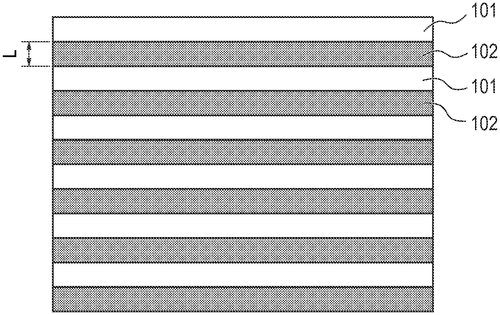
A new patent from Canon Kabushiki Kaisha introduces a unit for an electrostatic filter that incorporates a unique structure of patterns made from different substances with varying work functions. These patterns, when brought into contact with each other, create a repeated structure that could revolutionize the field of air filtration technology. Competitors in the air filtration market, such as Dyson and Honeywell, may need to take note of this innovative approach, which promises enhanced efficiency and performance. The potential applications of this technology are vast, from improving indoor air quality in homes and offices to enhancing filtration systems in industrial settings. As we consider the implications of this patent, one question arises: How might this new unit for electrostatic filters impact the way we approach environmental sustainability and air pollution control in the future? Share your thoughts in the comments below.
Abstract
A unit for electrostatic filter includes: a repeated structure of patterns that are respectively formed of one selected from at least two different substances having different work functions. The patterns formed of the different substances are put in contact with each other. The work functions differ by 1 eV or greater between the different substances put in contact with each other in the patterns. A unit for electrostatic filter includes: a repeated structure of patterns that are respectively formed of one selected from at least two different substances having different work functions. The patterns formed of the different substances are put in contact with each other. The work functions differ by 1 eV or greater between the different substances put in contact with each other in the patterns.
US Patent 12059690
Canon Kabushiki Kaisha
"Canon's Innovative Snap-Fit Structure Maximizes Utilization of Space"
What is this invention?
Snap-fit structure and method of assembling snap-fit structure
In a snap-fit structure so precise,
Engaging portions elastically entice.
Mounted components align just right,
With space maximized, out of sight,
A design innovation that's very nice.
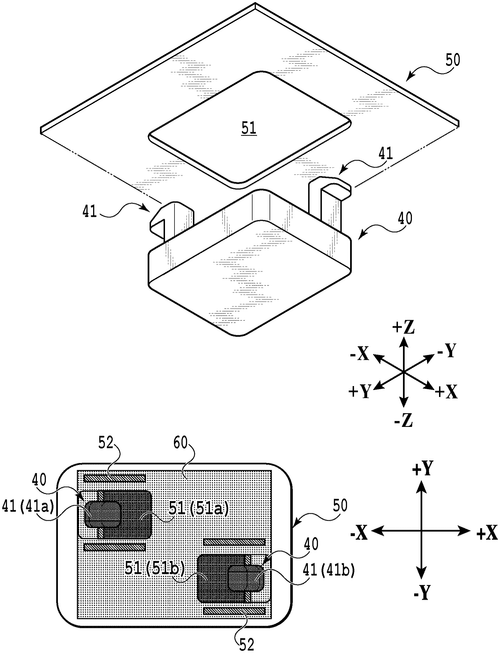
In the world of camera technology, Canon Kabushiki Kaisha has recently filed a patent for a snap-fit structure that aims to maximize utilization of space. This innovative structure features a mounting component with two engaging portions and a mounted component with an engaged portion, designed to provide a secure connection while allowing for efficient use of space where the engaging portion deforms elastically. While Canon has not yet announced any specific products utilizing this technology, it poses an interesting development in the competitive camera market where secure and space-efficient mounting solutions are highly sought after. This snap-fit structure could potentially be applied to various camera accessories such as lenses, flash units, or even tripod mounts, providing users with a convenient and reliable way to attach and detach components. As we await to see if Canon will integrate this snap-fit structure into their future camera products, it raises the question: How important is ease of attachment and space utilization for you when choosing camera accessories? Share your thoughts in the comments below.
Abstract
An object is to provide a snap-fit structure in which space on a side where an engaging portion elastically deforms can be effectively utilized. The snap-fit structure includes a mounting component with a first engaging portion and a second engaging portion and a mounted component formed with an engaged portion for engaging the first engaging portion and the second engaging portion. The second engaging portion is arranged in a position not aligned on the same line in a direction in which the first engaging portion elastically deforms. An object is to provide a snap-fit structure in which space on a side where an engaging portion elastically deforms can be effectively utilized. The snap-fit structure includes a mounting component with a first engaging portion and a second engaging portion and a mounted component formed with an engaged portion for engaging the first engaging portion and the second engaging portion. The second engaging portion is arranged in a position not aligned on the same line in a direction in which the first engaging portion elastically deforms.
US Patent 12059760
Canon Kabushiki Kaisha
"Innovative Patent: Ceramic Article Manufactured with Enhanced Strength and Machinability Using Direct Modeling System"
What is this invention?
Ceramics product manufacturing method and ceramics product
In the realm of ceramic creation,
A method brings sheer innovation,
Strength and wear resistance soar,
Machinability galore,
Through direct modeling, a poetic combination.

In a world where durability and precision are key, Canon Kabushiki Kaisha has patented a groundbreaking method for manufacturing ceramic articles that boast improved mechanical strength, wear resistance, and machinability. By utilizing a direct modeling system, this innovative process involves arranging ceramic powder on a base, irradiating it with an energy beam to form a modeled article, and then enhancing it with a metal component-containing liquid before subjecting it to heat treatment. Competitors in the market may find themselves scrambling to match the superior quality and performance that this new method promises to deliver. Imagine a future where industrial machinery parts, cutting tools, and even intricate art pieces are crafted with such advanced ceramic materials, surpassing the limitations of traditional manufacturing processes. But the question remains - will this patented method see the light of day beyond the confines of the patent office? Will it revolutionize industries and set a new standard for ceramic manufacturing? Share your thoughts and predictions on whether this innovation will become a reality in the comments below.
Abstract
Provided are a method of manufacturing a ceramic article in which the improvement of mechanical strength, wear resistance, and machinability is achieved using a direct modeling system, and a ceramic article. The manufacturing method includes the steps of: (i) arranging powder containing ceramics as a main component on a base; (ii) irradiating a part or an entirety of the arranged powder with an energy beam to melt and solidify the powder, to thereby obtain an intermediate modeled article; (iii) causing the modeled article to absorb a metal component-containing liquid to impregnate the modeled article therewith; and (iv) subjecting the modeled article having absorbed the metal component-containing liquid to heat treatment. Provided are a method of manufacturing a ceramic article in which the improvement of mechanical strength, wear resistance, and machinability is achieved using a direct modeling system, and a ceramic article. The manufacturing method includes the steps of: (i) arranging powder containing ceramics as a main component on a base; (ii) irradiating a part or an entirety of the arranged powder with an energy beam to melt and solidify the powder, to thereby obtain an intermediate modeled article; (iii) causing the modeled article to absorb a metal component-containing liquid to impregnate the modeled article therewith; and (iv) subjecting the modeled article having absorbed the metal component-containing liquid to heat treatment.
US Patent 12059819